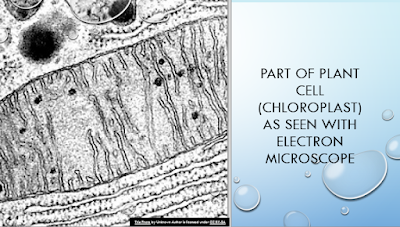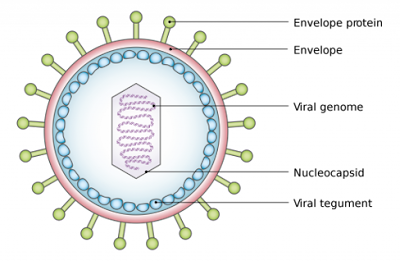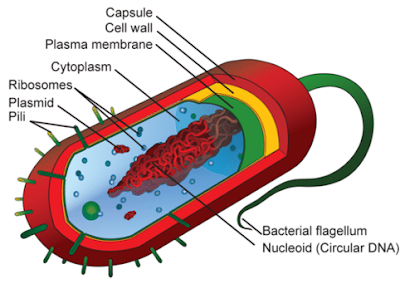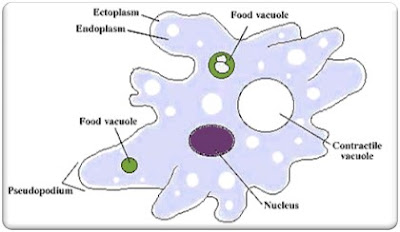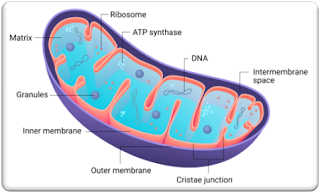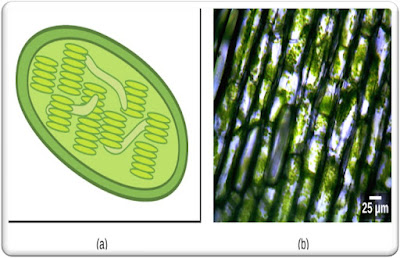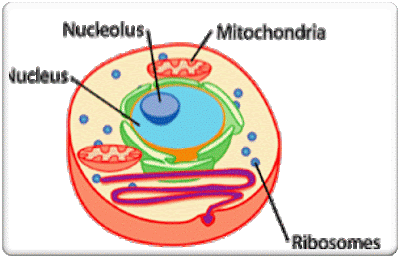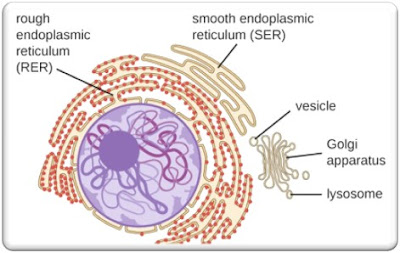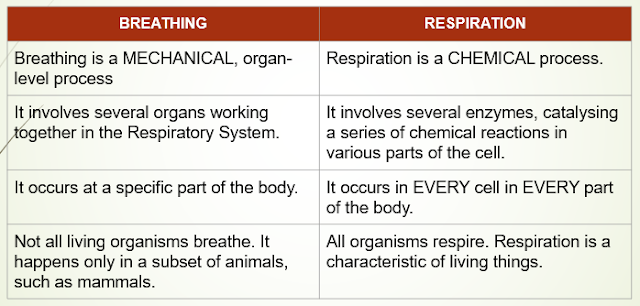STRUCTURE & FUNCTION - CELLS & MICROBES [CSEC BIOLOGY & HSB]
SYLLABUS REFERENCE
HSB
- [A2] compare the structures of an unspecialized plant and animal cell, and selected microbes [virus, bacteria, fungi];
- [A3] state the functions of cell structures and organelles;
CSEC BIOLOGY
- [B1.1] compare the structure of the generalised plant and animal cells, and selected microbes;
- [B1.2] distinguish between cell wall and cell membrane; mitochondrion and chloroplast;
- [B1.3] relate the structure of organelles to their functions;
- [B1.4] differentiate between plant and animal cells;
THE ROLE OF THE MICROSCOPE
Cells are sometimes called the 'units of life', as all organisms are made of cells. We have been able to look at cells for over 300 years, thanks to the invention of the microscope.
 |
| A LIGHT MICROSCOPE |
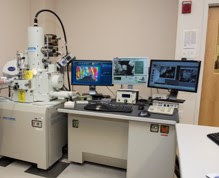 |
| AN ELECTRON MICROSCOPE |
ANIMAL VS PLANT CELLS
Animals and plants are very different from each other. Their cells are also quite different, apart from some similarities.
NOTE that the typical animal and plant cells shown in diagrams are not actual cells. They are hypothetical cells, based on scientist observations across specimens.
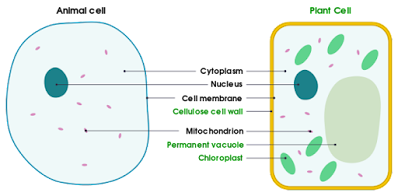 |
| COMPARING ANIMAL & PLANT CELLS |
 |
[VIDEO] DRAWING THE ANIMAL & PLANT CELL
MICROORGANISMS (aka MICROBES)
These are unicellular organisms which are only visible with aid of a microscope.
 |
| THE SCALE OF MICROBES |
VIRUSES
- All are pathogenic (parasitic and causes disease). They invade organisms and reproduce inside their cells. However, some are harmless - or even useful - to humans.
- Size range is 20-400 nm (1 million nm in 1 mm).
- There is debate whether they are living organisms, since they do not carry out any of the functions of normal living organisms except reproduction. And the reproduction is carried out by taking over another living cell.
- They do not have cellular structures. All consist of genetic material (DNA or RNA) enclosed in a protective protein coat. Some are surrounded by a cell membrane from their host cell.
BACTERIA
- Although some bacteria cause disease (pathogenic), many are harmless. Even some are actively useful to humanity.
- There is a wide variety of shapes between species of bacteria, with a shared typical cellular structure.
- The nucleus is absent, replaced with the nucleoid. The nucleoid consist of a large loop of DNA, lying 'naked' in the cytoplasm.
- It has a cell wall, like the plant cell. However, unlike the plant cell, its cell walls are made of murein, not cellulose.
- Some have an additional cell capsule, which has a slimy consistency.
- Like animal and plant cells, it has a cell membrane, and ribosomes for protein manufacture.
FUNGI
 |
| DIAGRAM OF A YEAST CELL |
- Yeast is the one type of fungi that is unicellular.
- Yeast cells are very similar to plant cells. The one major difference that one can see is the absence of chloroplasts in yeast cells.
- Unlike bacteria, each yeast cell has a nucleus, mitochondria, endoplasmic reticulum, ribosomes and a large vacuole.
- This Kingdom has a wide range of organisms, from the microscopic to macroscopic (eg. sea kelp).
- Some unicellular protists, such as the Amoeba, resemble animal cells. Others, such as Euglena, resemble plant cells.
- They are Eukaryotes, meaning they have a nucleus.
ORGANELLE STRUCTURE & FUNCTION -
ANIMAL & PLANT CELLS
All the processes of life take place within the cell, and usually involves hundreds of chemical reactions. This has the potential to be very chaotic, with reactions and chemicals interfering with each other.
This does not happen because:
- each reaction is controlled by an enzyme. (An enzyme is a protein that controls rate of reactions while not directly participating in the reaction). The enzyme controls the specific reaction, and prevents it getting mixed up with other reactions.
- the enzymes controlling different processes are compartmentalized. They occur in different parts of the cell. These cell compartments are called organelles.
Organelles are the self-contained structures suspended within the boundaries of a cell. They contain enzymes and chemicals to carry out specialized jobs within the cell.
These include membrane systems such as the endoplasmic reticulum. Some can only be seen with an electron microscope.
CYTOPLASM
- A liquid gel that fills the interior of the cell. 70% of the cytoplasm is water.
- Organelles and membrane systems are embedded in it.
- Many of the chemical reactions needed for life - such as respiration & protein synthesis - take place here.
NUCLEUS
- This is the control center of the cell. It controls all the activities in the cell and how the cell develops.
- It carries genetic information, stored on chromosomes. This genetic information is sent to the cytoplasm, where it is used to produce all the proteins needed.
VACUOLE
- In animal cells:
- Vacuoles are small sacs distributed throughout the cell.
- These vacuoles are used to store and/or transfer a wide variety of substances.
- In plant cells:
- Often a feature of mature plant cells.
- The vacuole is a large sac, positioned in the center of the cell. It tends to take up most of the space in the cell, pushing the cytoplasm to the edges of the cell.
- It is filled with cell sap, which is a liquid containing sugars, mineral ions, and other chemicals dissolved in water. This helps to maintain water balance in the cell.
- It is important for keeping the cells rigid to support the plant. Pressure in the vacuole pushes the cytoplasm against the cell wall, which keeps the whole structure firm.
CELL WALL
- A rigid covering for the plant cells only, made of cellulose.
- It gives the plant cell its fixed shape.
- It is fully permeable. It therefore allows diffusion of materials through it.
- It stops the cell from bursting when full of water.
CELL (PLASMA) MEMBRANE
- A flexible boundary around both animal and plant cells, keeping cell contents inside. A barrier between cells and their surroundings.
- It is made up mostly of lipids (fats).
- It is partially permeable, controlling which particle can cross it. It therefore facilitates osmosis.
MITOCHONDRION
- The 'powerhouse' of the cell. The reactions of aerobic respiration occurs here.
- Cells that need a lot of energy - such as muscle and secreting cells - have large quantities of mitochondria.
CHLOROPLAST
- Exclusive to plant cells.
- It is found in all the green parts of a plant. The chlorophyll in it gives green plants their color.
- The reactions of photosynthesis occur here.
- Starch is also stored here, apart from in the cytoplasm.
CELLULAR STRUCTURES SEEN ONLY WITH AN ELECTRON MICROSCOPE
RIBOSOMES
- These are found in the cytoplasm or embedded in the endoplasmic reticulum.
- They synthesize proteins from amino acids, according to genetic instructions.
ENDOPLASMIC RETICULUM (ER)
- This is a membrane system, found in the cytoplasm. (A membrane system is a network of flattened membrane structures, working together in a coordinated way.)
- It is a site of biochemical manufacture, modification, and preparation for export.
- Rough ER has ribosomes embedded in its membranes. It is focused on protein manufacture.
- Smooth ER has no ribosomes. It is focused on lipid manufacture.

